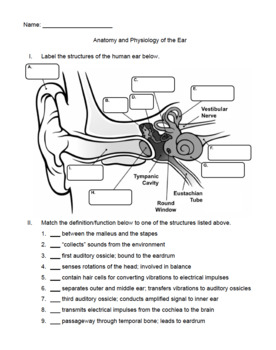The human eye is a complex organ that allows us to see the world around us. It is made up of several parts, each with its own important function. The cornea is the clear outer layer of the eye that helps to focus light. The iris is the colored part of the eye that controls the size of the pupil. The lens is a flexible structure that helps to focus light onto the retina.
The retina is a layer of cells at the back of the eye that contains photoreceptor cells called rods and cones. These cells convert light into electrical signals that are sent to the brain via the optic nerve. The optic nerve is a bundle of nerve fibers that connects the eye to the brain, allowing us to process visual information.
Eye And Ear Anatomy Worksheet
The Anatomy of the Ear
The human ear is another complex organ that allows us to hear and maintain balance. It is divided into three main parts: the outer ear, the middle ear, and the inner ear. The outer ear consists of the pinna, the ear canal, and the eardrum. The pinna helps to collect sound waves and direct them into the ear canal, where they cause the eardrum to vibrate.
The middle ear contains three small bones called the ossicles, which amplify the vibrations from the eardrum and transmit them to the inner ear. The inner ear includes the cochlea, a spiral-shaped structure filled with fluid and hair cells that convert sound vibrations into electrical signals. These signals are then sent to the brain via the auditory nerve, allowing us to perceive sound.
